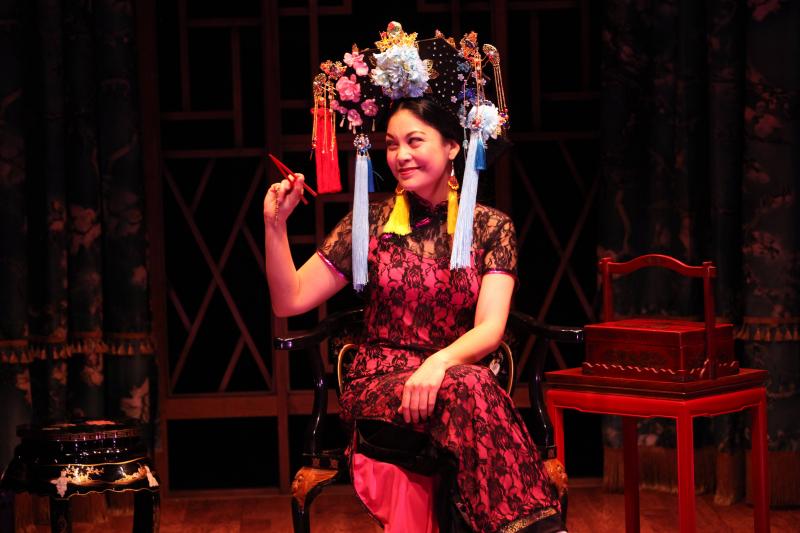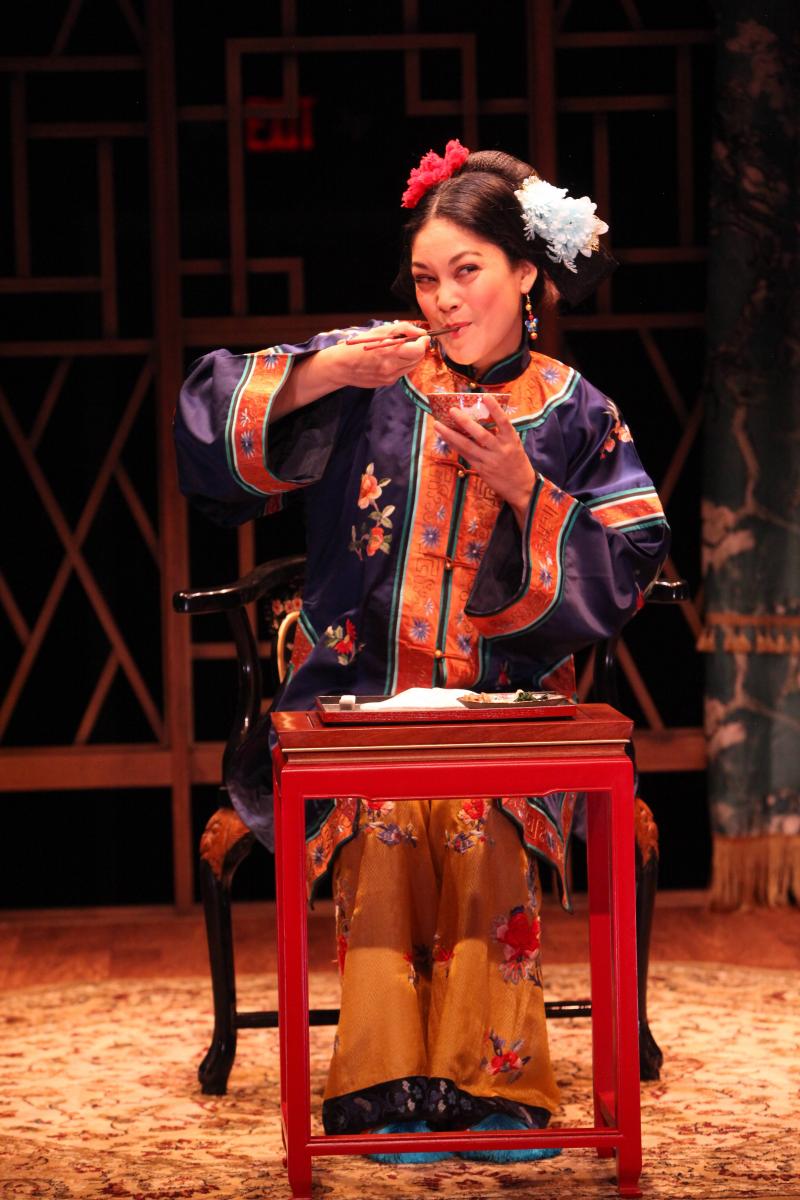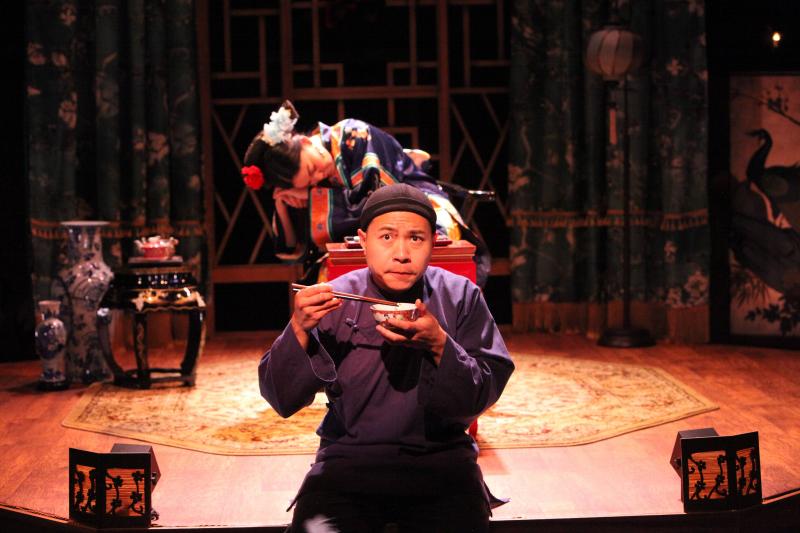Review: THE CHINESE LADY at Magic Theatre Brings to Light a Fascinating Piece of Cultural History

Magic Theatre kicks off its 2019-20 season with Lloyd Suh's intriguing "The Chinese Lady." Suh's point of departure is one of those fascinating "truth is stranger than fiction" tales that are so compelling it's hard to believe they aren't more widely known. His play tells the story of Afong Moy, the first Chinese female to set foot on American soil in 1834. As a point of reference, the 1830 U.S. census listed a grand total of 3 Chinese people, all male, living in the entire country. At the time, Chinese women were imagined by Americans to be impossibly exotic, delicate flowers. Moy was brought to New York at the tender age of 14 by a pair of businessmen, the Carne Brothers, in their effort to sell affordable Chinese furniture to America's growing middle class. Toward that end, they created an exhibition wherein patrons could pay 25 cents to view a real Chinese lady in her supposedly authentic surrounds. This exhibition proved so popular to the public that prices were increased, it went on tour throughout the Eastern U.S., and Moy was even taken to the White House to meet President Andrew Jackson, who was fascinated by her bound feet. Unfortunately, we have no historical record in Moy's own words, and virtually all of the story of her latter life is lost to history. Thus, playwright Suh describes this work as a conjuring of who he imagines Moy might have been.
The initial scenes of the play are dynamite - intriguing, funny, unsettling, enigmatic and very human. Moy is seated onstage in an octagonal faux-Chinese room within the exhibition hall where she engages in variations of the same ritual at various ages. She poses serenely, eats Chinese food with chopsticks, drinks tea, brings attention to her bound feet, and walks in a circle around the stage. Moy is aided by a Chinese manservant, Atung, who translates, brings food and drink, offers comment and gently bickers with her. The minor variations between these scenes are fascinating and telling as Moy gradually becomes more relaxed and Westernized over time. There is a constant, captivating tension between the simple fact of her being a real Chinese woman and her performing in certain ways to satisfy American expectations, and thus presumably increase business. There is an equally compelling tension in the relationship between Moy and Atung. She is clearly the star of the show, but in a way he has more power in the situation.

eats "real" Chinese food
The play eventually departs from the strictures of this ritual to take us through the remainder of the 19th century, including explanations of the Opium Wars, the Chinese Exclusion Act and other atrocities committed against Americans of Chinese descent. As unsettling and informative as those passages are, this is where the play begins to lose steam and focus. The writing becomes alternately more didactic and more poetic, and I felt like we were hearing direct address from the playwright instead of from the character of Moy. The end result is that we lose our sense of her as an individual. The play ultimately fast-forwards to the present day for a perspective-shifting conclusion that I assume is meant to be hopeful and stirring. As Suh states in the program notes, "I'm not that interested in talking about pain if it's not in the service of talking about where we want to go." As admirable as Suh's intention is, the conclusion as written by him and staged by director Mina Morita doesn't really work. It feels rushed and inchoate and - I really hate to say this - far too timid. It also calls to mind more successful moments from other plays as varied as Taylor Mac's "A 24-Decade History of Popular Music" and Jane Wagner's "The Search for Signs of Intelligent Life in the Universe."
Morita's production has some lovely moments, even if the cumulative effect is a bit stolid. Will Dao, as Atung, gets things off to a winning start with his enigmatic gaze out to the audience. His complicated interplay with Rinabeth Apostol as Afong Moy is one of the chief pleasures of the play. Dao's sly inflections and careful physicality suggest there is a lot more to Atung than he may be willing to show us "customers." Apostol is reasonably successful as Moy - and let's face it, this is a mammoth role with most of the play resting on her shoulders - showing us both the real Moy and the performative Moy. The apparent choice not to noticeably age the character over the decades, however, ultimately undercuts the effectiveness of Apostol's performance as we have no sense of time passing and thus the toll this work must have taken on Moy.

Scenic designer Jacquelyn Scott has created a self-contained octagonal stage with surrounding curtain that raises and lowers to effectively demarcate the shifts in time. Her design hits a nice balance in appearing authentically Chinese as seen through a Western lens. Abra Berman's fanciful and evocative costumes hit that same balance. The real star of the show's physical production is Wen-Ling Liao's lighting. She manages to give Moy and the Chinese room a warm and slightly eerie glow that brings them into 3-dimensional relief against the amorphous black netherworld behind them. For the record, this is the third design I've seen from Liao in the past few months, and her work has been stellar each time.
In the end, this play is a bit of a heart-breaker for me because it holds so much promise. In subject matter and sensibility, it is exactly the kind of play I want to see from the Magic. It tells a fascinating story that resonates with our current, lived experience, and also plays with dramatic form. I'm glad I saw it. I learned a lot from it. I just wish I had been genuinely moved by it as well.
Photos by Jennifer Reiley
"The Chinese Lady" runs through Sunday, October 3rd at the Magic Theatre, Fort Mason Bldg. D, 3rd Floor, San Francisco, CA 94123. Running time is 90 minutes. Tickets and further information available at www.MagicTheatre.org or by calling (415) 441-8822.
Reader Reviews
Videos

